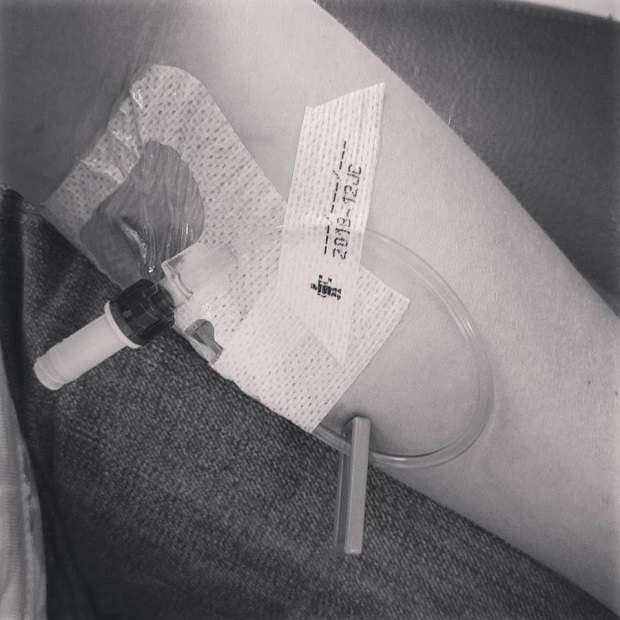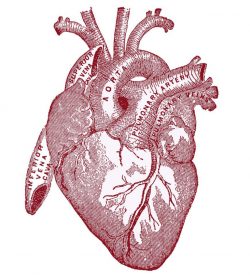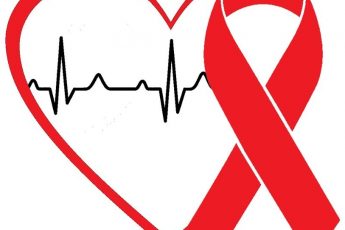
I haven’t been posting regularly, but I am still here. And this is especially relevant today.
On this day four summers ago, on the start of Memorial Day Weekend 2017, I suffered a heart attack at 32 years old.

I had just returned to a new job from a very brief maternity leave (only 6 weeks) and was looking forward to a long weekend of baby snuggles and a nice family picnic. However, instead of spending that time on a colorful blanket in the warm sunshine with my boys, I spent it in a cold, bright hospital room in the cardiac ICU recovering from a spontaneous coronary artery dissection (SCAD). It was truly one of the scariest things to ever happen to me and my family, and there were so many questions, some of which are still unanswered.
Four years ago I woke up on a Saturday morning feeling completely normal. I nursed Sebastian like normal but when I went to lie back down in bed, I felt a strange tightening sensation in my chest, a warm sensation radiating up my chest and throat followed by pain in my jaw that felt like I had been clenching my teeth for hours, and a weird discomfort/numbness in my left arm. I didn’t know exactly what was happening but I knew something wasn’t right. I stood up and started pacing around the bedroom, telling Nick that I suddenly didn’t feel well and that I was afraid something was seriously wrong. We decided to go to urgent care where they determined that my blood pressure was really high (which, for me, is normally low) and abnormal EKG results, so the doctor sent me to the emergency room.
In the ER, several blood tests revealed elevated levels of troponin, an enzyme that presents in very high levels in the blood when there has been damage to the heart muscle, a big indicator of a heart attack. They moved me to the cardiac ICU, and after a cath lab procedure where they inserted a camera into the arteries around my heart and finding no clogs or other blockages, the doctors concluded that I must have had a SCAD heart attack. Due to lack of risk factors, they determined it was likely pregnancy related, as pregnancy itself causes a lot of strain on the heart. I currently believe that extreme emotional distress of having to return to work before I was physically and emotionally healed from childbirth played a huge role, too. Essentially what happened during the SCAD was the lining of the coronary artery tore or dissected, causing the lining to flip out and block blood flow to my heart, resulting in the heart attack. Luckily for me, the tissue pushed itself back into place pretty quickly and began repairing itself. Good job to my body on that one!
For a long time after this, I spent countless hours coping with complicated feelings of anxiety, an almost- paralyzing fear that it would happen again, gratitude that I survived such a serious and traumatic event, and the inability to shake the “what if” thoughts.
BUT because I had missed out on my picnic that fateful weekend, it has become a tradition of sorts to have a picnic every year around May 27 to celebrate each year of survivorship. My picnic was put on hold last year for obvious reasons (mostly COVID-19 + packing up our house to sell it & move) but we’ll definitely be picnicking this year. And now I get to decide between picnicking in the cute little gazebo at the center of our new neighborhood or at our favorite spot by the lake.

In positive health news, I’m currently in very good physical and mental health. My health anxiety has subsided significantly, and any symptoms I experience now are more general in nature. I have significantly fewer panicked moments, I worry less about it happening again (although I don’t think that worry will ever go away completely), and I’m back to enjoying life as much as one can in these pandemic times. But, honestly, if I’m not careful, this day can still be very triggering for me.
Updates from the last four years:
- I’ve had a cardiac MRI to determine 1) if what I experienced truly was a SCAD heart attack as opposed to a blood clot that quickly dissolved or some other disorder that may mimic heart attacks–turns out it WAS a heart attack– and 2) to check my heart function. A normal heart’s ejection fraction (EF), which is a measurement of how much blood the left ventricle pumps out with each contraction, may be between 50 and 70 percent, and mine measured in at 61 percent. I’m practically good as new!
- I’ve consulted with a geneticist to try to determine if I have any genetic markers that would cause a SCAD heart attack. Having this information will help inform my treatment going forward to ensure I stay as healthy as possible. I’m still awaiting the results from this.
- I’ve been tested for FMD with negative results. Fibromuscular dysplasia (FMD) is a condition where your veins can become twisted, making it harder for blood to pump to your heart. Usually, folks with FMD are more prone to SCAD and, conversely, folks who experience SCAD have FMD. Luckily, the CT scans showed that I don’t have FMD.
- I signed up for and started training for the inaugural 5K SCADaddle© for Research to run 3.2 miles and raise money to support even more SCAD research. The race was originally scheduled for April 2020 but was postponed due to the coronavirus pandemic, so my training fizzled out for a bit until I picked it back up this year. Now I try to jog every weekday morning.
- I continue to be active in several online support groups, including a SCAD Survivors NC Facebook group where I can connect with and support survivors in my community who truly understand what I’ve gone through because they’ve experienced it, too.
- I monitor my eating habits. My diet has never been horrible but we now make it a habit to cook at home more and to ensure we’re eating more fresh fruits and veggies.
Last year I started wearing a FitBit that reads my heart rate, which has helped tremendously with preventing the panic. I used to think I could feel my heart beating in a weird way or beating much too fast and that would cause me to freak out. Now, if I get those sensations, I simply check my FitBit and more often than not, my heart rate is normal. If it is a little more elevated than usual, I stop what I’m doing and take a few deep, calming breaths until it decreases again. Then I can go about my day as normal. I’m so grateful for small inventions like this FitBit!

All in all, I’m doing very well. And as always, I’m looking forward to a long lifetime full of sunny, warm picnics with these two handsome fellas!












